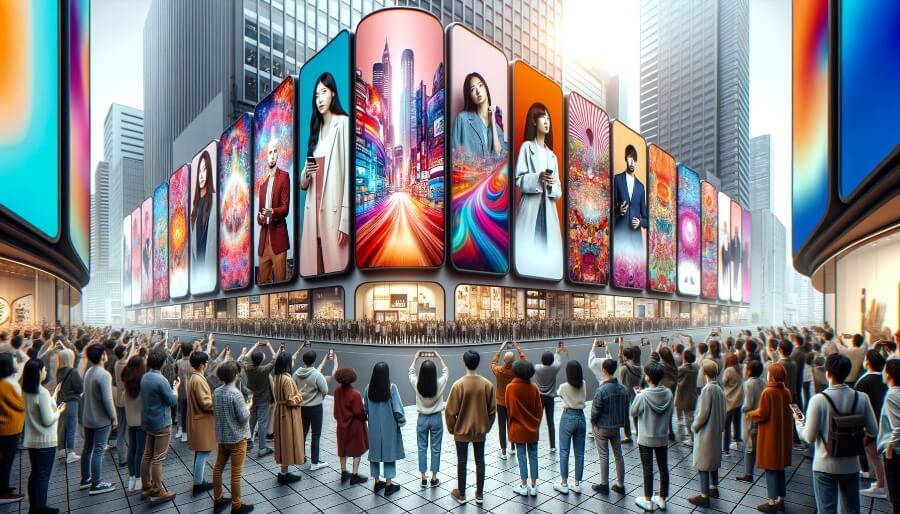
In the ever-evolving world of digital marketing, ad banner campaigns play a pivotal role in capturing the attention of potential customers and driving conversions. It’s not uncommon to come across ads while browsing websites, social media, or even mobile apps. Some of these ads are forgettable, while others leave a lasting impression. This article delves into the world of ad banner campaigns, with a focus on those that have achieved exceptional results. We will dissect their design strategies and outcomes to uncover the secrets behind their success.
Analyzing Real-World Ad Banner Campaigns that Achieved Exceptional Results
Ad banner campaigns are a core component of online advertising. These small, visually engaging banners are strategically placed across various digital platforms to promote products, services, or brand awareness. While the effectiveness of ad banners can vary significantly, some campaigns have managed to stand out and deliver outstanding results.
The Power of Exceptional Design
Before we delve into specific case studies, let’s emphasize the critical role of design in ad banner campaigns. Exceptional design is the cornerstone of a successful ad banner. Here are some design elements that make a significant impact:
1. Eye-Catching Visuals
The first thing that grabs a user’s attention is the visual aspect of the banner. Bright colors, high-quality images, and intriguing graphics can make your ad stand out in a sea of digital content.
2. Clear and Concise Messaging
In the limited space of an ad banner, every word counts. A concise and compelling message that communicates the value proposition is crucial. Users should quickly understand what you’re offering.
3. Call-to-Action (CTA)
A well-placed CTA button encourages users to take the desired action, such as clicking through to a landing page or making a purchase. The CTA should be clear, actionable, and positioned prominently. Explore some ecommerce landing page examples to understand how to best place your CTAs.
4. Responsive Design
In an era of diverse devices, ensuring that your ad banner looks great on both desktop and mobile is essential. Responsive design adapts the banner to different screen sizes and resolutions.
5. A/B Testing
Testing multiple versions of your ad banner can provide valuable insights into what works best. A/B testing helps optimize design elements, messaging, and CTAs for maximum effectiveness.
Case Study 1: Apple’s iPhone Launch Campaign
Objective: To create anticipation and excitement for the launch of the new iPhone.
Design Strategy:
- Utilized high-resolution images of the product.
- Kept messaging simple with the tagline “Meet the future.”
- Included a prominent CTA button with “Pre-order now.”
- Released teaser banners before the official launch.
Outcome:
- Generated massive buzz and pre-orders.
- Demonstrated the power of anticipation in marketing.
Case Study 2: Coca-Cola’s “Share a Coke” Campaign
Objective: To boost engagement and personalized brand interaction.
Design Strategy:
- Customized ad banners with various names.
- Encouraged users to find their name or a friend’s name.
- Fun and colorful visuals that emphasized sharing.
Outcome:
- Increased user engagement and social media sharing.
- Personalized approach resonated with customers.
Case Study 3: Nike’s “Just Do It” Campaign
Objective: To reinforce brand identity and inspire action.
Design Strategy:
- Minimalistic design with the iconic Nike swoosh.
- Inspiring and motivational messaging.
- Strong emphasis on the CTA with “Shop Now.”
Outcome:
- Reinforced Nike’s brand image of determination and athleticism.
- Boosted sales of Nike products.
Case Study 4: Airbnb’s “Live There” Campaign
Objective: To promote Airbnb as a unique travel experience provider.
Design Strategy:
- Used immersive imagery showcasing local experiences.
- Encouraged users to explore destinations.
- Highlighted the “Live There” concept.
Outcome:
- Increased bookings and brand loyalty.
- Reinforced Airbnb’s positioning as a travel alternative.
Case Study 5: Old Spice’s “The Man Your Man Could Smell Like” Campaign
Objective: To rebrand Old Spice as a modern and humorous brand.
Design Strategy:
- Created humorous and memorable video ad banners.
- Utilized an attractive spokesperson.
- Engaged with viewers on social media.
Outcome:
- Went viral and increased sales.
- Revived Old Spice’s brand image.
Conclusion
Successful ad banner campaigns are a result of careful planning, creativity, and a deep understanding of your target audience. By incorporating eye-catching visuals, clear messaging, effective CTAs, responsive design, and continuous testing, you can increase the chances of your ad banner achieving exceptional results.
Remember that the digital landscape is constantly evolving, so staying updated with the latest design trends and consumer behavior is crucial. Learn from these case studies and adapt their strategies to create your own memorable ad banner campaigns. With the right approach, your ad banners can become powerful tools for driving brand recognition and conversions in the online world.
Stay inspired, stay creative, and keep pushing the boundaries of what ad banner campaigns can achieve.